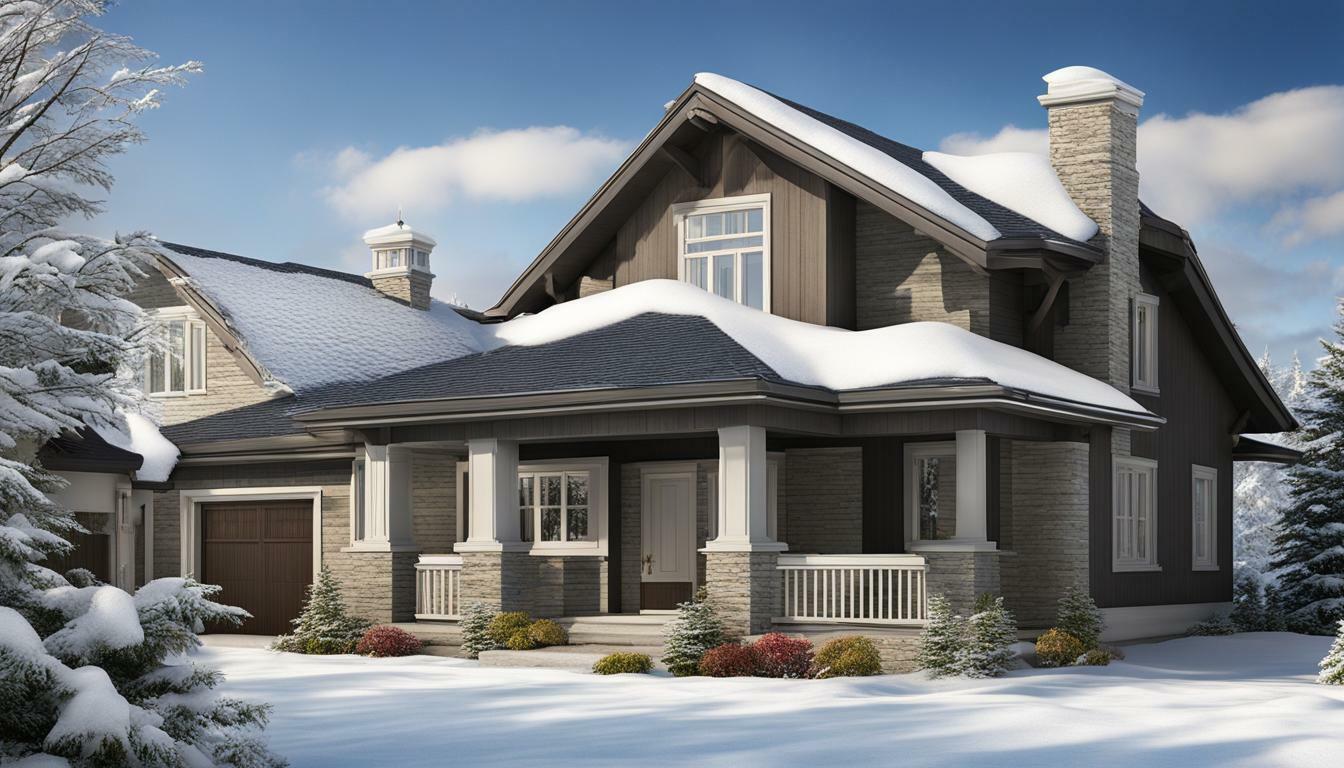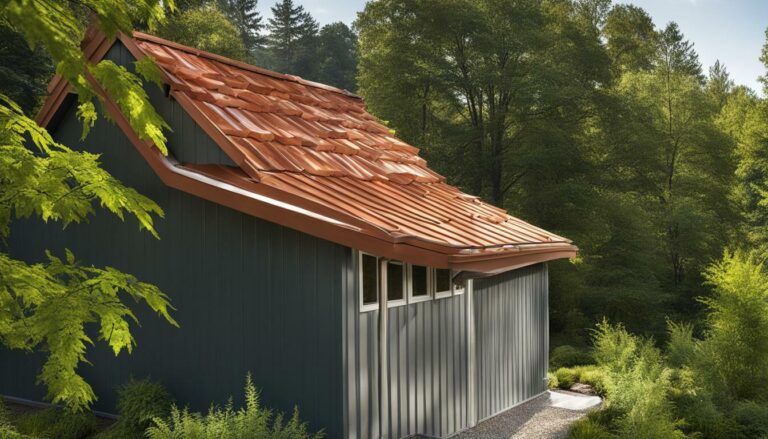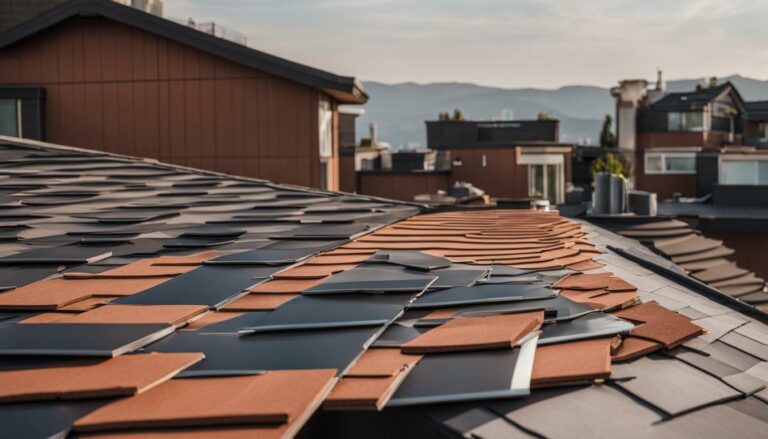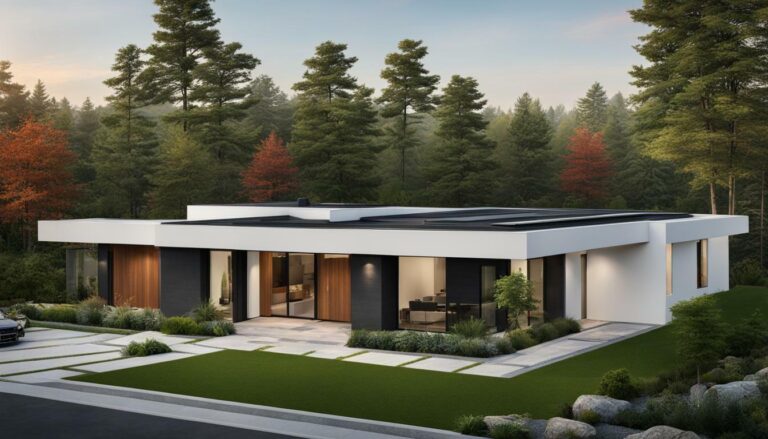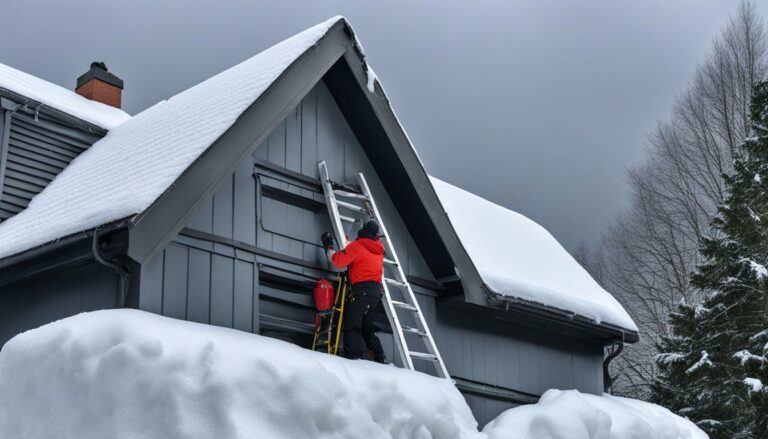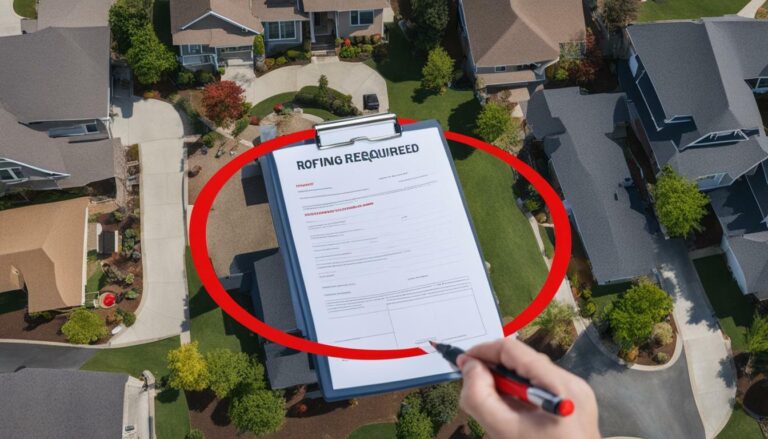Expert Guide: Roofing for Extreme Climates in the US
Living in an area with extreme weather conditions calls for durable and resilient roofing materials that can withstand the challenges posed by Mother Nature. Choosing the right roofing materials based on climate is crucial to avoid costly problems in the future. To help you make informed decisions, this expert guide explores the best roofing solutions for various extreme climates found in different regions of the US. Whether you’re dealing with hot climates, cold climates, wet climates, dry climates, or windy climates, we’ve got you covered.
Key Takeaways:
- Match your roofing materials to the specific extreme climate in your region to ensure optimal protection.
- Cool roofs are recommended for hot climates as they reflect sunlight and reduce energy costs.
- For cold climates, prioritize durability and insulation to guard against freezing temperatures and heavy snowfall.
- Moisture-resistant materials are essential in wet climates to prevent water damage and mold growth.
- In dry climates, choose materials that can withstand prolonged sun exposure and limited rainfall.
- Windy climates require roofing materials and systems that are designed to resist strong winds and hurricanes.
- Consider popular roofing materials like asphalt shingles, metal roofs, and tile roofs, based on their pros and cons in different weather conditions.
- Hiring a professional roofer with experience in extreme climates is crucial for proper installation and maintenance.
By understanding the unique challenges posed by your region’s extreme climate and selecting the right roofing materials, you can ensure the long-lasting protection of your home. Stay tuned as we delve deeper into each climate and explore the specific roofing solutions that will keep your home safe and secure.
Understanding Different Extreme Climates in the US
The United States experiences a wide range of extreme climates, from scorching heat and intense hurricanes to heavy snowstorms and hail. To ensure the longevity and durability of your roof, it is essential to understand the specific weather conditions in your region and choose the best roofing materials accordingly. Weatherproofing your roof is crucial to protect your home from potential damage caused by extreme weather events. Here, we will explore the various extreme climates in the US and the best roofs for each type of weather.
Hot Climates:
In regions with hot climates, it is important to choose roofing materials that can withstand high temperatures and intense sunlight. Cool roofs, which have reflective surfaces, are particularly suitable for hot climates. These roofs help to reduce heat absorption, lower energy costs, and keep the interior of your home cooler. Common cool roofing materials include light-colored shingles, metal roofs, and tiles. They effectively reflect sunlight, preventing excessive heat buildup and prolonging the lifespan of your roof.
Cold Climates:
In areas that experience freezing temperatures and heavy snowfall, it is crucial to choose roofing materials that offer durability and insulation. Asphalt shingles are a popular choice for cold climates as they provide excellent protection against ice and snow buildup. Metal roofs, with their snow-shedding properties, are also highly recommended. Additionally, ensure proper insulation to prevent ice dam formation and heat loss.
Wet Climates:
Moisture-resistant roofing materials are essential in regions with high levels of precipitation. Consider investing in durable shingles, tiles, or metal roofs that have excellent water-shedding capabilities. It is also important to ensure proper insulation and ventilation to prevent condensation and mold growth. Regular maintenance, such as removing debris and checking for leaks, is crucial to keep your roof in optimal condition.
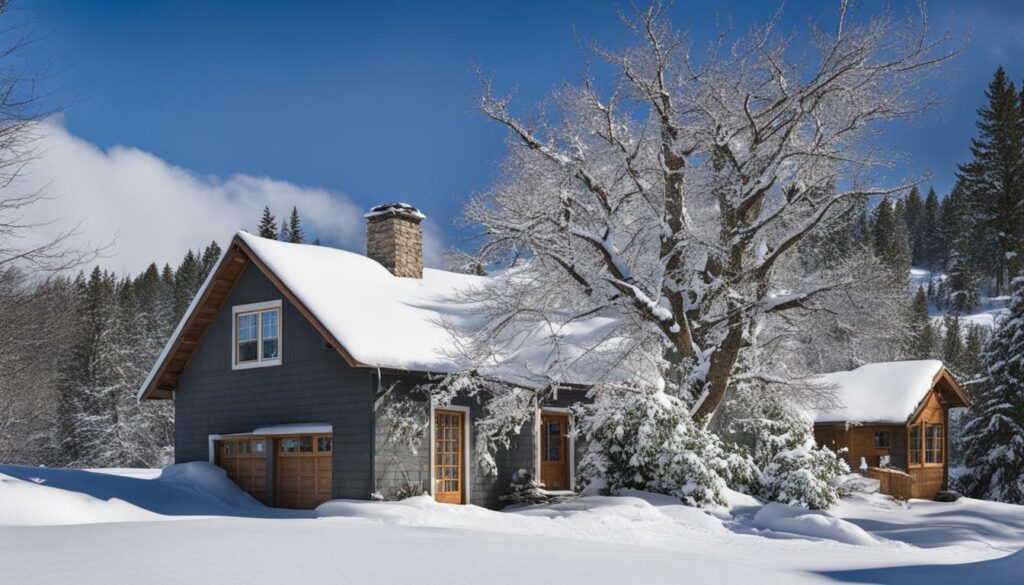
Dry Climates:
For regions with dry climates and prolonged sun exposure, it is important to choose roofing materials that can withstand the harsh UV rays and limited rainfall. Materials such as clay or concrete roof tiles are ideal for dry climates as they are durable and heat-resistant. Additionally, ensure proper insulation to keep your home cool and energy-efficient.
Windy Climates:
In areas prone to strong winds and hurricanes, it is crucial to invest in long-lasting roofing materials that can withstand severe weather conditions. Metal roofs are highly recommended for their durability and wind-resistance properties. Additionally, consider reinforced shingles or tiles that are specifically designed to resist strong winds. Regular inspections and maintenance are essential to ensure your roof remains secure and intact.
Popular Roofing Materials for Extreme Climates:
Here is an overview of popular roofing materials suitable for extreme climates:
| Roofing Material | Advantages | Disadvantages |
|---|---|---|
| Asphalt Shingles | Cost-effective, easy to install, wide variety of colors | Prone to damage in extreme weather, shorter lifespan compared to other materials |
| Metal Roofs | Durable, long-lasting, excellent wind and fire resistance | Higher upfront cost, may require professional installation |
| Tile Roofs | Long lifespan, aesthetically pleasing, excellent durability and fire resistance | Heavier weight, higher cost, may require additional structural support |
When choosing the best roofing materials for your region, it is recommended to consult with a skilled roofing professional who can provide expert advice tailored to your specific climate and home requirements. Their knowledge and experience will ensure that your roof is well-prepared to withstand the challenges of extreme weather conditions.
Roofing Solutions for Hot Climates
Hot climates require roofing materials that can effectively regulate temperature and reduce the need for constant air conditioning. When it comes to protecting your home in extreme climates, it is crucial to choose climate-resistant roofing products that can withstand the scorching heat and intense sunlight. One popular option for hot climates is cool roofs.
Cool roofs are designed to reflect sunlight rather than absorb it, helping to keep your home cooler and reducing the strain on your air conditioning system. They are typically made of light-colored or reflective materials, such as white or light-colored asphalt shingles, metal roofs, or clay tiles. These materials can reflect a significant amount of solar radiation, preventing heat from entering your home and providing energy savings.
Additionally, cool roofs offer other benefits, such as prolonging the lifespan of the roof itself by reducing thermal stress and minimizing the risk of warping or cracking. They can also contribute to mitigating the urban heat island effect, which is a phenomenon that causes cities to be several degrees warmer than surrounding rural areas due to the absorption and re-emission of heat by buildings and pavements.
| Roofing Material | Pros | Cons |
|---|---|---|
| Light-colored asphalt shingles | Reflects sunlight, reduces cooling costs | May not be as durable as other options |
| Metal roofs | Highly reflective, long-lasting | Can be more expensive upfront |
| Clay tiles | Excellent heat resistance, aesthetically pleasing | Can be heavier and more expensive to install |
When considering roofing solutions for hot climates, it is essential to consult with a skilled roofing professional who has experience working in extreme weather conditions. They can assess your specific needs and recommend the most suitable materials and installation techniques to ensure maximum protection for your home.
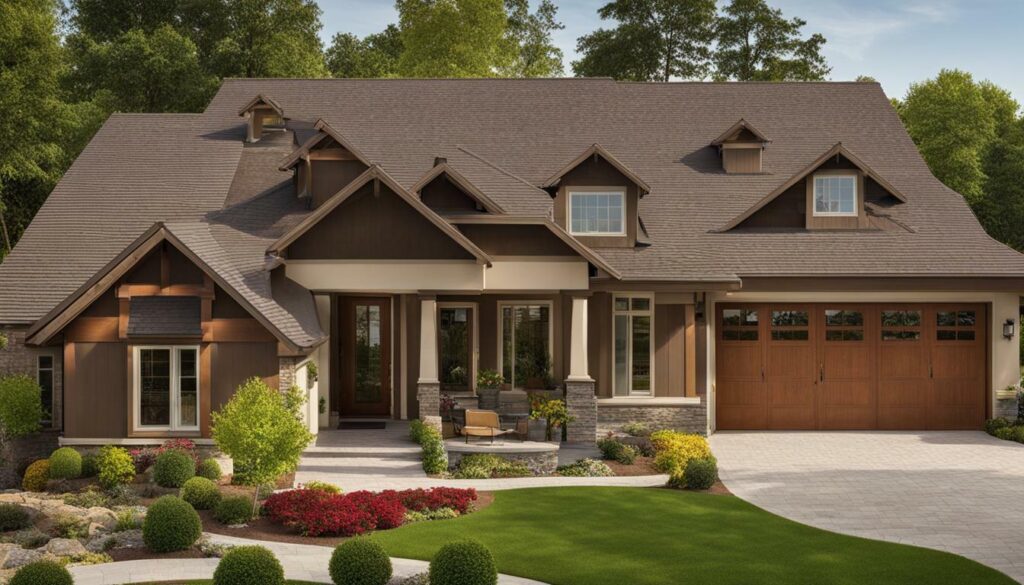
By choosing climate-resistant roofing products for hot climates, you can protect your home from the damaging effects of prolonged exposure to heat and sunlight. Not only will these materials help regulate temperature and reduce the need for constant air conditioning, but they can also prolong the lifespan of your roof and contribute to energy savings. Ensure you hire a skilled roofing professional who understands the unique challenges of hot climates to ensure a durable and long-lasting roofing solution for your home.
Roofing Solutions for Cold Climates
Cold climates demand roofing materials that can withstand freezing temperatures, heavy snow loads, and ice dams. When it comes to protecting your home in harsh winter conditions, durability and insulation are key factors to consider. Here are some roofing solutions that are well-suited for cold climates:
Metal Roofs
Metal roofs are an excellent choice for cold climates due to their durability and ability to shed snow easily. They are resistant to cracking, warping, and rotting, making them ideal for withstanding freezing temperatures. Metal roofs are also lightweight, which reduces the risk of structural damage from heavy snow loads. Additionally, they provide excellent insulation, helping to keep your home warm during winter months.
Asphalt Shingles
Asphalt shingles are a popular roofing material known for their affordability and reliability. They have excellent waterproofing properties, which is crucial in cold climates where snow and ice can cause water damage. With proper installation and regular maintenance, asphalt shingles can withstand freezing temperatures and protect your home from snow buildup. They are also available in a wide range of colors and styles to suit your aesthetic preferences.
Tile Roofs
Tile roofs, particularly clay or concrete tiles, are durable and long-lasting options for cold climates. These roofs have excellent thermal mass properties, which help regulate indoor temperatures by absorbing heat during the day and releasing it at night. This can reduce heating costs during winter months. Tile roofs are also resistant to moisture, making them suitable for areas with heavy snowfall. However, it’s important to ensure proper installation to prevent tiles from cracking due to freezing and thawing cycles.
| Roofing Material | Pros | Cons |
|---|---|---|
| Metal Roofs | Durable, lightweight, excellent insulation | Higher initial cost, can be noisy during rainfall |
| Asphalt Shingles | Affordable, reliable, wide range of options | Shorter lifespan compared to some other materials |
| Tile Roofs | Durable, excellent thermal properties | Higher installation and maintenance costs, weight considerations |
In summary, when it comes to roofing solutions for cold climates, it’s important to choose materials that can withstand freezing temperatures, heavy snow loads, and ice dams. Metal roofs, asphalt shingles, and tile roofs are all viable options, each with their own advantages and considerations. Consulting with a skilled roofing professional can help you determine the best choice for your specific needs and climate.

Roofing Solutions for Wet Climates
Rain, high humidity, and constant moisture require roofing materials that can effectively repel water and prevent leaks. In wet climates, it is crucial to choose moisture-resistant roofing materials and systems to protect your home from water damage and mold growth. The right roofing materials can help ensure the longevity and durability of your roof, even in the face of relentless rain and humidity.
One popular roofing option for wet climates is asphalt shingles, which are known for their waterproof properties and affordability. These shingles are designed with a waterproof coating that prevents water from seeping into your home. Additionally, metal roofs, such as aluminum or steel, are an excellent choice for wet climates due to their durability and ability to withstand heavy rainfall.
“Investing in high-quality roofing materials that are resistant to water is crucial for protecting your home in wet climates,” says John Smith, a roofing expert from XYZ Roofing Company. “These materials help prevent water damage and ensure the structural integrity of your roof.”
In addition to choosing the right roofing materials, it is important to ensure proper installation and maintenance. Regularly inspecting your roof for any signs of damage, such as cracked shingles or loose seams, can help detect and address potential issues before they become major problems. Hiring a skilled roofing professional who has experience working with wet climates is essential to ensure that your roof is properly installed and equipped to withstand the challenges of constant moisture.
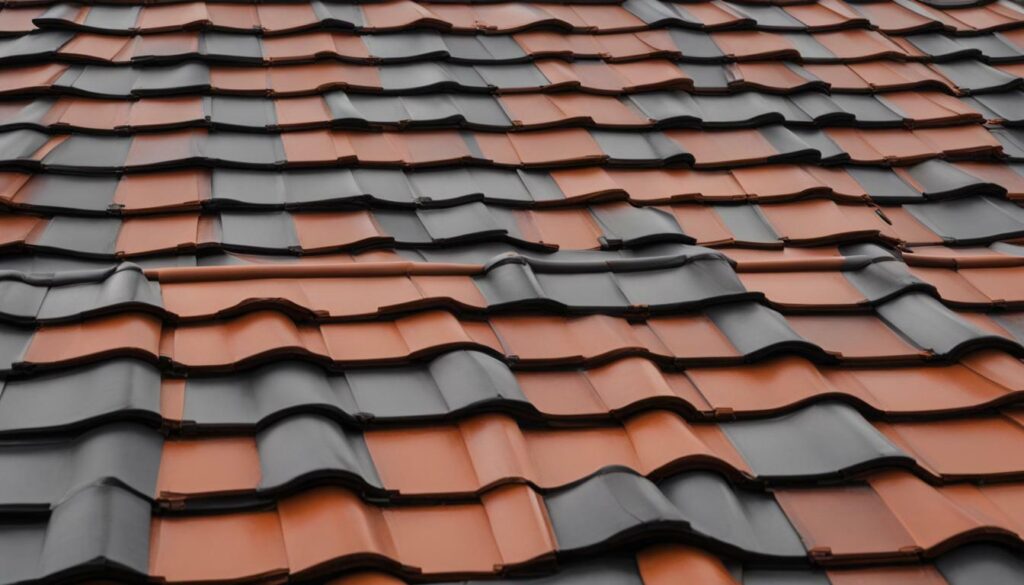
| Roofing Material | Advantages |
|---|---|
| Asphalt Shingles | Waterproof, affordable, widely available |
| Metal Roofs | Durable, excellent water resistance |
| Concrete/Clay Roof Tiles | Resistant to water damage, long lifespan |
In conclusion, protecting your home in wet climates requires choosing roofing materials that are resistant to water and can effectively repel moisture. Asphalt shingles, metal roofs, and concrete/clay roof tiles are popular options known for their durability and water resistance. Remember to hire a skilled roofing professional who understands the unique challenges of wet climates to ensure your roof is properly installed and maintained.
Roofing Solutions for Dry Climates
Dry climates require roofing materials that can endure intense heat, UV radiation, and occasional dust storms or sandstorms. To ensure the longevity and protection of your roof in these extreme conditions, it is essential to choose climate-resistant roofing products and implement effective weatherproofing techniques.
One popular roofing material suitable for dry climates is asphalt shingles. They are known for their durability and ability to withstand high temperatures. Asphalt shingles are also cost-effective and relatively easy to install, making them a practical choice for homeowners in dry regions.

Another option to consider is metal roofs. Metal roofs provide excellent heat resistance and can reflect sunlight, helping to keep your home cooler and reduce energy costs. They are also highly durable, resistant to fire, and can withstand harsh weather conditions such as strong winds and hail.
Advantages of Metal Roofs:
- High durability
- Heat resistance
- Energy-efficient
- Fire-resistant
- Minimal maintenance required
For those seeking a more traditional look, tile roofs are an excellent option. Concrete or clay roof tiles are known for their longevity and ability to withstand extreme heat. They provide natural insulation, keeping homes cooler in hot climates and reducing the need for excessive air conditioning.
Advantages of Tile Roofs:
- Long lifespan
- Heat and fire resistance
- Natural insulation
- Low maintenance
When considering roofing solutions for dry climates, it is crucial to consult with a skilled roofing professional who understands the specific challenges and requirements of your region. They can recommend the best materials and techniques to ensure your roof can withstand the demanding conditions and protect your home effectively.
By investing in climate-resistant roofing products and implementing proper weatherproofing measures, you can ensure the longevity and durability of your roof in dry climates, providing peace of mind and protecting your home for years to come.
Roofing Solutions for Windy Climates
Windy climates demand roofing materials that can withstand the destructive force of high winds and severe storms. In these regions, it is crucial to choose long-lasting roofing solutions that can protect your home in extreme climates. While no roof can be completely immune to strong winds, investing in materials specifically designed for windy conditions can significantly reduce the risk of damage.
One popular roofing option for windy climates is metal roofs. Metal roofs are known for their durability and strength, making them an excellent choice to withstand the force of strong winds. Additionally, metal roofs have a long lifespan, providing homeowners with peace of mind knowing their roofs are built to last. These roofs are available in various styles and colors, allowing you to find a design that suits your taste and complements your home’s aesthetic.

Another suitable option for windy climates is asphalt shingles. These shingles are designed to resist high winds and are manufactured with wind-resistant features such as reinforced nailing zones and adhesive strips. Asphalt shingle roofs are cost-effective and widely available, making them a popular choice for homeowners in windy regions. With proper installation and regular maintenance, asphalt shingle roofs can provide reliable protection against severe weather conditions.
Table: Comparison of Roofing Materials for Windy Climates
| Roofing Material | Advantages | Disadvantages |
|---|---|---|
| Metal Roofs | Durable and strong, long lifespan | Higher initial cost |
| Asphalt Shingles | Cost-effective, widely available | Shorter lifespan compared to metal |
When selecting roofing materials for windy climates, it is essential to consult with a skilled roofing professional who has experience in installing roofs in severe weather conditions. They can provide expert guidance on the most suitable materials and ensure proper installation to optimize wind resistance. Additionally, regular roof inspections and maintenance are crucial to identify any potential issues and address them promptly, helping to prolong the lifespan of your roof and protect your home in extreme climates.
Popular Roofing Materials for Extreme Climates
There is a wide range of roofing materials available for homeowners in extreme climates, each with its own set of advantages and considerations. Whether you’re dealing with scorching heat, freezing temperatures, heavy rainfall, or strong winds, choosing the right roofing material is essential to ensure the longevity and protection of your home. In this section, we will explore some of the most popular options for extreme climates: asphalt shingles, metal roofs, and tile roofs.
Asphalt Shingles
Asphalt shingles are a common choice for homeowners in extreme climates due to their affordability, versatility, and durability. They can withstand high winds, moderate hail, and UV exposure. Asphalt shingles are available in a variety of styles and colors, making them suitable for different architectural designs. However, they may not be the best option for areas with heavy snowfall or extreme heat, as they can deteriorate over time.
Metal Roofs
Metal roofs are highly durable and can withstand severe weather conditions, making them an excellent choice for extreme climates. They are resistant to fire, wind, hail, and heavy snowfall. Metal roofs also have excellent longevity, often lasting 50 years or more with proper maintenance. They reflect sunlight, reducing the heat absorbed by your home and potentially lowering cooling costs. However, metal roofs can be expensive upfront and may require professional installation.
Tile Roofs
Tile roofs are known for their exceptional durability and aesthetic appeal. They can withstand high winds, heavy rains, and extreme temperatures. Tile roofs are also fire-resistant and have a long lifespan, often lasting over 100 years. They are available in various materials, including clay and concrete, offering different styles and colors to complement your home’s architecture. However, tile roofs can be heavy and may require a reinforced roof structure. They are also more expensive than other roofing materials.
In conclusion, choosing the right roofing material is crucial for homeowners in extreme climates. Asphalt shingles, metal roofs, and tile roofs are popular choices that offer different benefits and considerations. Consider the specific climate and weather conditions in your area, as well as your budget and desired aesthetics when selecting a roofing material. Consulting with a skilled roofing professional can provide valuable insights and help you make an informed decision that will protect your home for years to come.
| Roofing Material | Advantages | Considerations |
|---|---|---|
| Asphalt Shingles | Affordable, versatile, and durable | May deteriorate in extreme heat or heavy snowfall |
| Metal Roofs | Highly durable, resistant to fire and severe weather | Expensive upfront, professional installation required |
| Tile Roofs | Exceptionally durable, aesthetic appeal, fire-resistant | Heavy, expensive, may require reinforced roof structure |
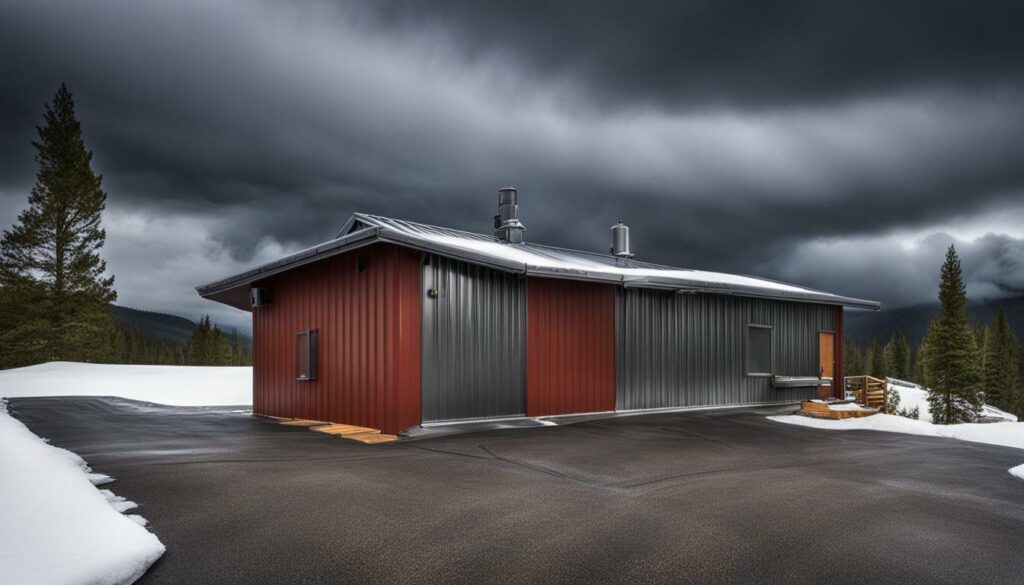
Hiring a Skilled Roofing Professional
Installing and maintaining roofs in extreme climates requires the expertise and skill of professional roofers who understand the unique challenges these conditions bring. It is important to hire qualified professionals who have experience in working with durable roofing options for harsh climates and can provide long-lasting solutions for severe weather.
When selecting a roofing professional, consider their track record in dealing with extreme climate conditions. Look for contractors who have successfully completed projects in your specific region, as they will have a better understanding of the local climate and the roofing materials that work best in those conditions.
Furthermore, make sure to ask for references and check online reviews to verify the quality of their work. A reputable roofing professional should be able to provide testimonials from satisfied customers and showcase their portfolio of completed projects.
Remember, hiring a skilled roofing professional not only ensures the proper installation of your roof but also provides the peace of mind that it will withstand the challenges posed by extreme climates, minimizing the risk of damage and costly repairs in the future.
| Benefits of Hiring a Skilled Roofing Professional: |
|---|
| Expertise in working with durable roofing options for harsh climates |
| Knowledge of local climate and materials suitable for specific regions |
| Experience in handling the unique challenges of extreme weather conditions |
| Access to top-quality roofing materials and equipment |
| Peace of mind knowing the roof will be installed correctly and withstand the elements |

Conclusion
Protecting your home in extreme climates requires careful consideration of the right roofing materials and systems that can withstand the challenges posed by challenging weather conditions.
In this expert guide on roofing for extreme climates in the US, we have discussed the importance of choosing the right roofing materials based on climate. It is crucial to avoid future problems and costly repairs. By understanding the different extreme climates found in different regions of the country, homeowners can make informed decisions about weatherproofing their roofs.
For hot climates, cool roofs are highly recommended as they reflect sunlight and reduce energy costs. In cold climates, choosing durable roofing materials with good insulation is essential to protect against freezing temperatures and heavy snowfall. In wet climates, moisture-resistant roofing materials and systems are crucial to prevent water damage and mold growth. In dry climates, roofs need to withstand prolonged sun exposure and limited rainfall. And in windy climates, reinforced roofing materials that can resist strong winds and hurricanes are necessary.
Popular roofing materials suitable for extreme climates include asphalt shingles, metal roofs, and tile roofs. However, it is important to consult with a professional roofing professional to determine the best choice for your specific climate. Their experience and expertise in installing and maintaining roofs for extreme climates will ensure the longevity and durability of your roof.
By following these guidelines and hiring a skilled roofing professional, homeowners can find the right roofing solutions for their challenging climates. Investing in the right materials and proper installation will provide peace of mind and protect your home from the harshest weather conditions.
FAQ
Q: Why is choosing the right roofing material for extreme climates important?
A: Choosing the right roofing material for extreme climates is crucial because it helps prevent costly problems in the future, such as water damage, mold growth, and structural issues.
Q: What are the best roofing materials for hot climates?
A: Cool roofs, which reflect sunlight and reduce the need for air conditioning, are ideal for hot climates. Other options include asphalt shingles, metal roofs, and tile roofs.
Q: What roofing materials are suitable for cold climates?
A: In cold climates, it’s important to choose roofing materials that are durable and provide insulation against freezing temperatures and heavy snowfall. Options include asphalt shingles, metal roofs, and wood shingles.
Q: What roofing materials are resistant to water damage in wet climates?
A: To protect against water damage and mold growth in wet climates, it’s important to choose moisture-resistant roofing materials, such as metal roofs, tile roofs, and concrete/clay roof tiles.
Q: What roofing options are best for dry climates?
A: In dry climates, it’s important to choose roofing materials that can withstand prolonged sun exposure and limited rainfall. Suitable options include asphalt shingles, metal roofs, and concrete/clay roof tiles.
Q: What roofing materials are designed to resist strong winds in windy climates?
A: For windy climates, it’s essential to choose roofing materials and systems specifically designed to resist strong winds and hurricanes. Options include metal roofs and impact-resistant asphalt shingles.
Q: What are some popular roofing materials for extreme climates?
A: Popular roofing materials for extreme climates include asphalt shingles, metal roofs, tile roofs, wood shingles, and concrete/clay roof tiles. Each material has its own advantages and disadvantages depending on the specific climate.
Q: Why is hiring a skilled roofing professional important for extreme climates?
A: Hiring a skilled roofing professional is important because they have the experience and knowledge to install and maintain roofs specifically designed for extreme climates. They can ensure that the roofing materials are properly installed and can handle the challenges of the specific climate.
